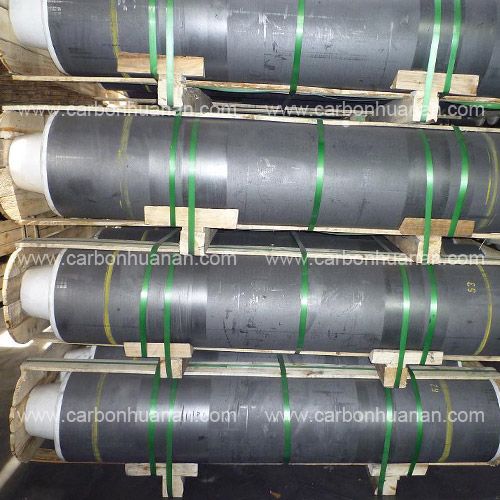Jul. 13, 2020
Graphite electrode uses petroleum coke, pitch coke as a granular material, coal pitch as binder, and is a kind of high-temperature-resistant graphite conductive material made by kneading, molding, roasting, graphitization and mechanical processing. The graphite electrode is an important high-temperature conductive material for electric furnace steelmaking. The graphite electrode is used to input electrical energy to the electric furnace. The high temperature generated by the arc between the electrode end and the charge is used as the heat source to melt the charge for steelmaking. Some other electrical smelting or electrolysis equipment Graphite electrodes are also often used as conductive materials. In 2000, the world consumed about 1 million tons of graphite electrodes, and China consumed about 250,000 tons of graphite electrodes in 2000. Utilizing the excellent physical and chemical properties of graphite electrodes, it is also widely used in other industrial sectors. The carbon product industry, which produces graphite electrodes as the main variety, has become an important component of the contemporary raw material industry.

A brief history
As early as 1810, Humphry Davy used charcoal to make carbon electrodes that can generate arcs when energized, opening up the broad prospect of using carbon materials as high-temperature conductive electrodes. In 1846, Stair and Edward (Edwards) Use coke powder and sucrose to mix and press shape, and roast at high temperature to make another kind of carbon electrode, and then immerse this carbon electrode in concentrated sugar water to increase its bulk density, they obtained Patent right to produce this electrode.
In 1877, Cleveland's C. F. Brush and W. H. Lawrence used calcined petroleum coke to develop low-ash carbon electrodes.
In 1899, O.G. Pritchard first reported the method of manufacturing natural graphite electrode using Ceylon natural graphite as raw material. In 1896, Kastner (H.Y. Gastner) obtained the patent right to use electricity to directly heat the carbon electrode to high temperature and to produce artificial graphite electrodes with better performance than natural graphite electrodes.
In 1897, EGAcheson of Carborundum Co. manufactured the first batch of artificial graphite electrodes using petroleum coke as the raw material in the resistance furnace for producing silicon carbide. The product specifications are 22mm×32mm×380mm. An artificial graphite electrode was used to produce caustic soda in the electrochemical industry at that time. The "Acheson" graphitization furnace designed on this basis will consist of a carbon electrode produced by petroleum coke and a small amount of resistance material (gold coke particles) to form a "hearth resistance" after the power is turned on, a high temperature is generated, and the carbon electrode made of petroleum coke is "graphitized" at a high temperature to obtain an artificial graphite electrode.
The above information is provided by the graphite electrode supplier.
Add : Jicun Town, Yuanshi County, Shijiazhuang City, Hebei Province
Tel : +86 311 6736 8225
Mob. : +86 186 3307 7361
Fax : +86 311 6736 8225
E-mail : huanancarbon@vip.163.com
WhatsApp : +86 186 3307 7365
NAVIGATION
WRITE US